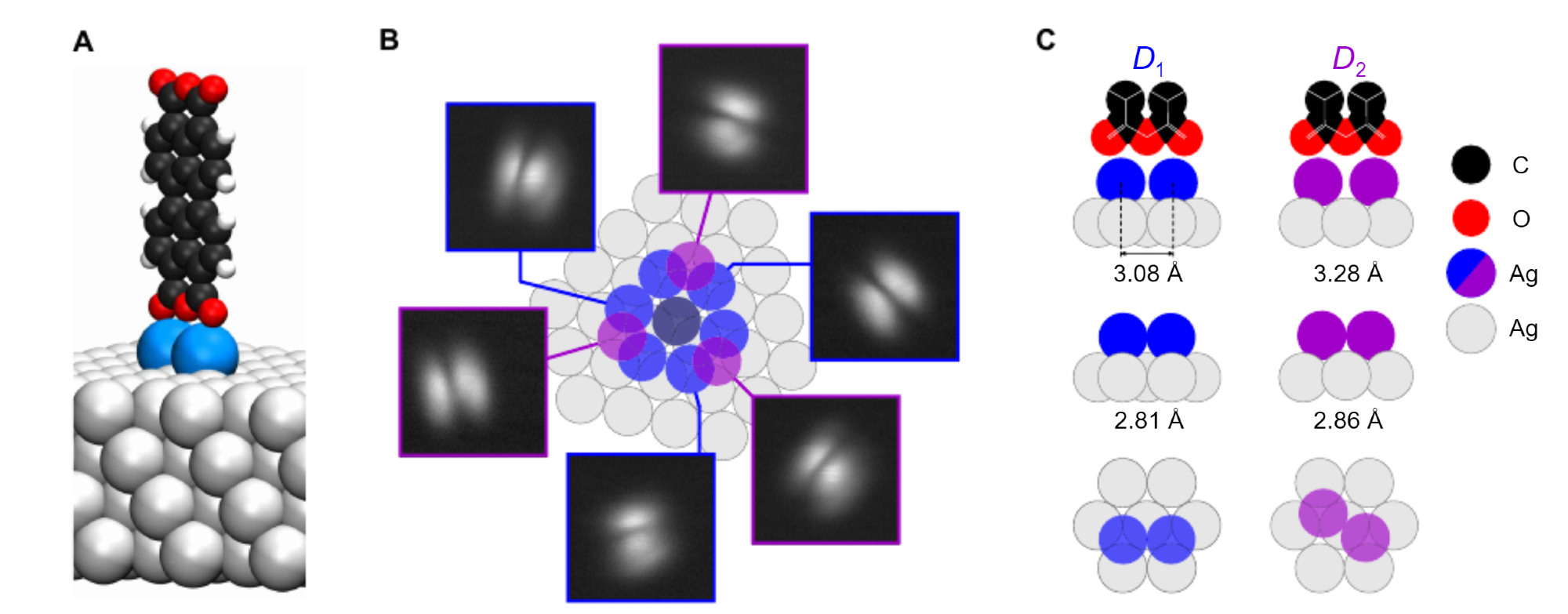Nanotechnology is changing the world: manipulating matter on a near-atomic scale to produce nanomaterials, nanostructures and nanomachinery that have a widespread application in everything from biomedicine to quantum computing.
 Image Credit: Knol, M., et al., (2021) The stabilization potential of a standing molecule. [online] Science Advances. Available at: https://www.science.org/doi/10.1126/sciadv.abj9751
Image Credit: Knol, M., et al., (2021) The stabilization potential of a standing molecule. [online] Science Advances. Available at: https://www.science.org/doi/10.1126/sciadv.abj9751
Particularly, nanoscale material is capturing the imagination of nanotechnology engineers who are driven by the urge to assemble part-by-part operational machinery at the nanoscale. Inspired by Richard Feynman’s vision and famous talk on atom-by-atom assembly, nanoscale machinery has excellent application potential in drug delivery, memory storage and single atom transistor technology.
However, there are numerous challenges engineers must overcome. While current advanced technologies can facilitate the manipulation of single molecules, their quantum nature makes doing so unpredictable.
Nonetheless, a recent article published in Science Advances presents the scanning probe microscope (SPM) as a useful tool for advancing molecular-scale fabrication.
Led by Dr. Christian Wagner, a researcher at the Peter Grünberg Institute at the Research Centre of Jülich, Germany, the team was able to show that SPM facilitated the interaction with a single standing molecule.
It was recently demonstrated that a single 3,4,9,10-perylene-tetracarboxylic dianhydride (PTCDA) molecule can be brought into a standing configuration on an Ag(111) surface.
Dr. Christian Wagner, a researcher at the Peter Grünberg Institute at the Research Centre of Jülich, Germany
What is SPM?
Scanning probe microscopy (SPM) is a method of sample surface observation, as a branch of microscopy that, instead of using light to scan the specimen, uses a physical probe. As a result, SPM can obtain information down to the sub-atomic level that is not feasible using light microscopy.
The resolution of SPM even exceeds the potential of other advanced microscopy techniques, such as scanning electron microscopy (SEM) and transmission electron microscopy (TEM).
The physical probe at the core of the system has an extremely sharp nanoscale tip that scans the sample back and forth, similar to the way a record player’s needle interacts with the grooves of a vinyl record.
The image area that SPM scans can be as small as just a few nanometers. SPM techniques are extremely versatile, meaning that many types of measurements can be conducted depending on the interaction between the probe and sample.
Application of the Method
Using the SPM method, Wagner and his team were able to evaluate the thermal stability of the molecule and at what temperature it would resolve back to its natural state after being subjected to manipulation: just 14 degrees above absolute zero.
We have measured the lifetime of a threedimensional SPM-fabricated single-molecule device and identified its stability mechanism as a generic balance between local covalent interactions and nonlocal long-range vdW forces.
Dr. Christian Wagner, a researcher at the Peter Grünberg Institute at the Research Centre of Jülich, Germany
Wagner and his team, which included researchers from the Department of Chemistry at the University of Warwick, also conducted a series of quantum calculations that disclosed the subtleties of the molecular stability, which proved challenging.
However, this challenge allows the team to make a concerted effort to improve their methodology in the future and make technological use of the quantum properties of individual molecules.
The results reported here may guide the future design and fabrication of a broad range of metastable molecular structures.
Dr. Christian Wagner, a researcher at the Peter Grünberg Institute at the Research Centre of Jülich, Germany
Additionally, in identifying the interactions that facilitate single-standing molecules, the team can build new methods to tune quantum interactions. The key to future progress was the discovery of the temperature to determine the potential energy barrier that stabilizes the molecule in its standing configuration.
The researchers have successfully demonstrated that scanning probe microscopy can bring the possibility of an SPM-based fabrication approach to rearrange atoms and molecules on a surface closer to reality.
Beyond their influence on the future design and construction of three-dimensional molecular-scale devices on surfaces, the researchers also highlight that standing molecules may also function as tunable mechanical gigahertz oscillators.
References and Further Reading
Davey, R., (2021) What is Molecular Nanotechnology?. [online] AZoNano.com. Available at: https://www.azonano.com/article.aspx?ArticleID=5850
Knol, M., et al., (2021) The stabilization potential of a standing molecule. [online] Science Advances. Available at: https://www.science.org/doi/10.1126/sciadv.abj9751
Disclaimer: The views expressed here are those of the author expressed in their private capacity and do not necessarily represent the views of AZoM.com Limited T/A AZoNetwork the owner and operator of this website. This disclaimer forms part of the Terms and conditions of use of this website.